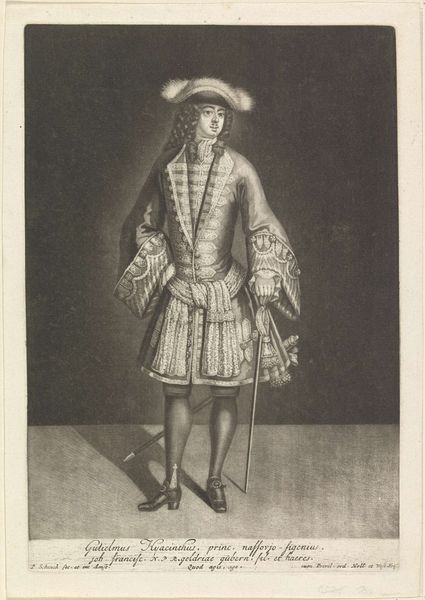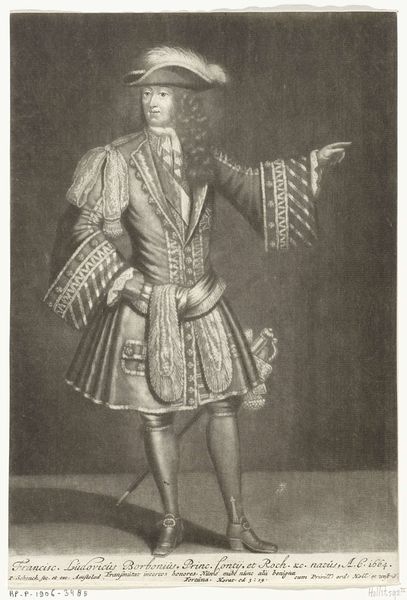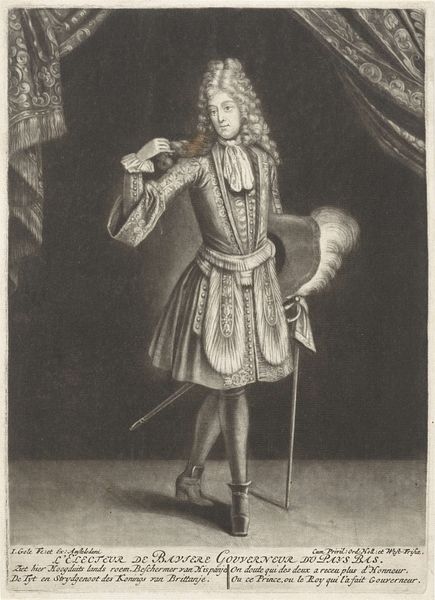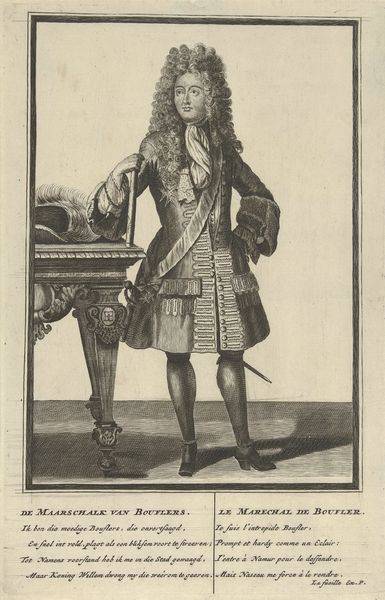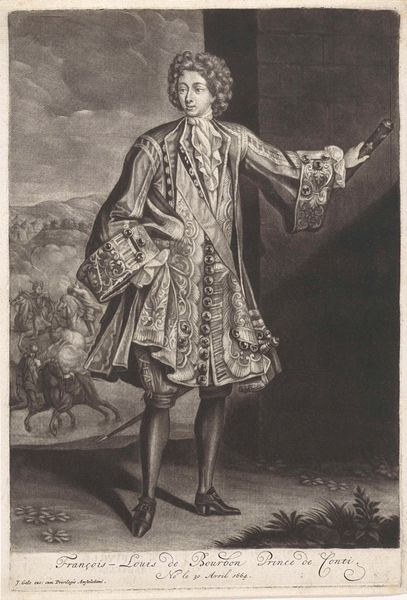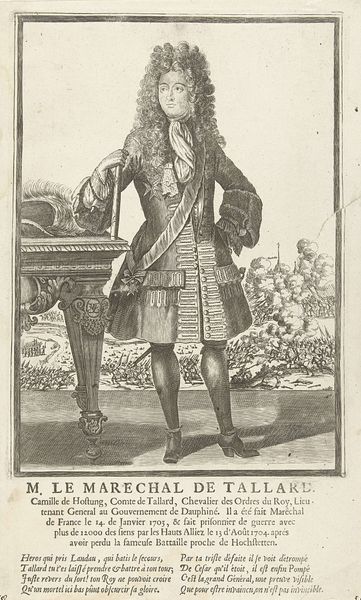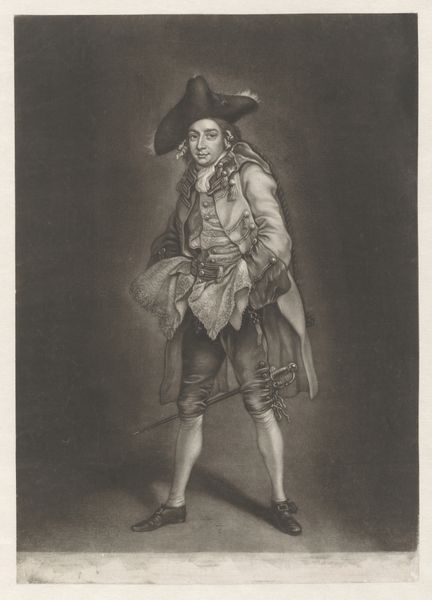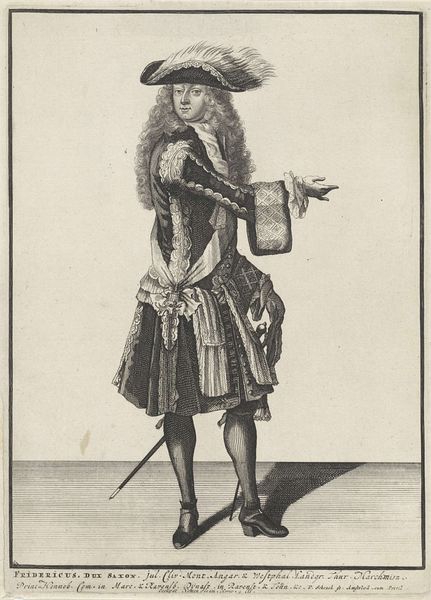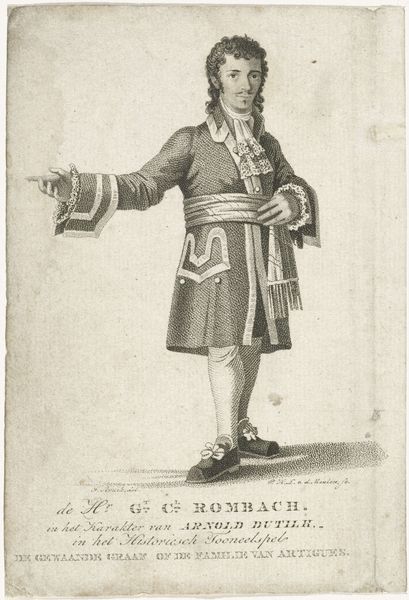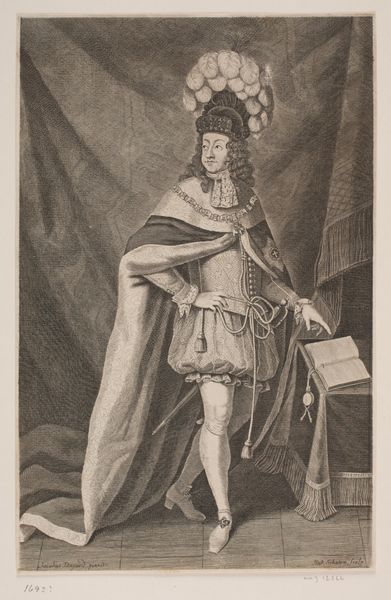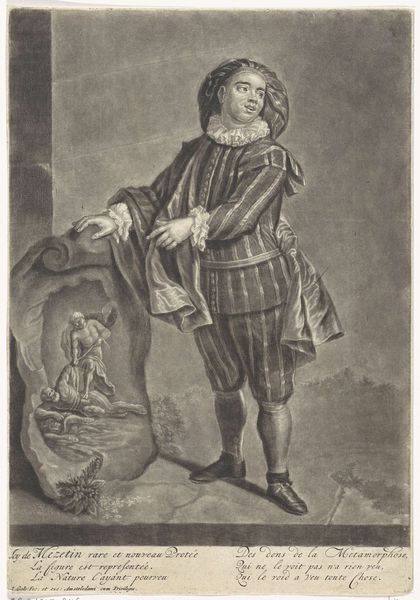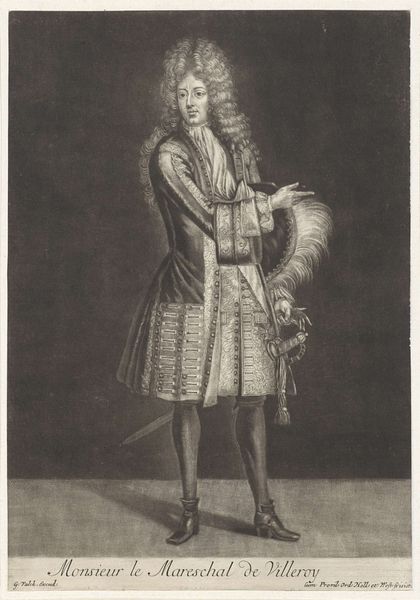
print, engraving
#
portrait
#
baroque
# print
#
old engraving style
#
history-painting
#
engraving
Dimensions: height 249 mm, width 181 mm
Copyright: Rijks Museum: Open Domain
Editor: Here we have Jacob Gole's portrait of Marshal Louis François, Duke of Boufflers, dating from between 1670 and 1724. It's a print, an engraving, and the subject just radiates power and a certain theatricality. I'm curious, what do you see in this piece that I might be missing? Curator: Oh, I love the theatricality you pointed out! I'm struck by how it captures a very specific moment in Baroque society – a performance of power, really. Look at the extravagance of the clothing, the feathered hat, the carefully posed gesture. But beyond that, do you notice the faint inscription at the bottom? It almost feels like a secret commentary. I wonder, does it add another layer of meaning for you? Editor: Yes, I didn't pay much attention to the text initially. I can read just enough to gather that it references something about war and "Verset Wilkens," which is likely Willem III, stadtholder of the Netherlands, the King of England. It suddenly brings a different political aspect into it... like he’s an actor on a stage for foreign power, somehow? Curator: Precisely! And the “theatricality" feels less innocent, doesn't it? It reminds us that portraits in this era weren’t just about likeness, they were carefully constructed narratives about status, ambition, and perhaps even political alliances. Think of this Marshal’s position in society – doesn't the image’s performative nature underscore all the more about the time? Editor: Definitely. The engraving itself – its reproducibility – speaks to that desire for wide distribution and reinforcement of an image. It really challenges that initial feeling of solely observing something from the past; this all indicates the intent to shape perspectives and public persona. Thanks, I hadn't considered the wider political context that influenced the piece! Curator: Exactly! That interplay of visual elements and historical context is where art truly comes alive, don’t you think?
Comments
No comments
Be the first to comment and join the conversation on the ultimate creative platform.
